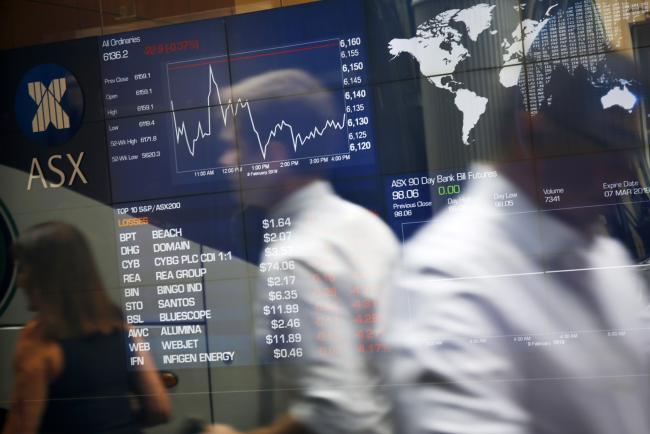(Bloomberg) -- Promises of easy monetary policy have sent Australia’s stocks soaring to the highest in more than a decade. But there’s a speed bump: Soft profit growth.
The benchmark S&P/ASX 200 Index has eluded a weakening economy and a deepening housing slump to soar near levels not seen since before the global financial crisis. Speculation that the Reserve Bank of Australia will cut interest rates has helped drive the gauge up more than 12 percent this year, but results from Australia’s biggest banks and third-quarter trading updates could cause the nation’s stocks to sputter.
The market “will get excited about the outlook of easing liquidity or economic growth, and then it needs to be followed by actual earnings growth,” said Jun Bei Liu, a portfolio manager at Tribeca Investment Partners in Sydney.
Australia’s stocks have taken part in this year’s global equities rally, even as the domestic economy showed signs of trouble. Strong commodity prices and a better-than-expected end to an inquiry into financial-industry misconduct also helped elevate the benchmark. Australian stocks jumped to its highest level in more than 11 years after the nation’s first-quarter inflation missed analyst estimates on April 24, spurring hopes the central bank will cut rates next week.
There’s a close to 50 percent chance the RBA will lower its cash rate target from a record-low 1.50 percent at its May 7 meeting, according to overnight interest-rate swaps on Wednesday.
Fading Optimism
A potential RBA rate cut and fiscal stimulus driven by Australia’s upcoming election are expected to buoy the market, Morgan Stanley (NYSE:MS) analysts led by Chris Nicol write in an April 28 note. While the analysts see the need for that inducement, they felt the need to “push back on the likely timing of such and look to soft earnings trends at the upcoming banks results season and broader company trading updates” in the third quarter.
Results from Australia & New Zealand Banking Group Ltd. and National Australia Bank Ltd. this week point to weakness over the next few quarters, given margin depression and low-volume growth, Liu at Tribeca said. Financial stocks, which make up about a third of the benchmark index, are up just under 10 percent this year, though among the benchmark’s worst performers.
Read: ANZ Cost Performance Pleasing as Headwinds Emerge: Street Wrap
“Optimism has faded somewhat into the sector,” she said.
‘Toppy’ Market
Some investors believe Australian equities have simply gone up too much. The broader market is “toppy” and overdue for a “decent” sell-off, which will likely begin in early to mid May, according to Richard Coppleson, director of institutional sales and trading at Bell Potter Securities.
Coppleson sees the S&P/ASX 200 dropping about 13 percent -- to around the 5,500 level -- by the third quarter, according to an April 18 note to clients. The benchmark closed at 6,338.40 Thursday.
Australian stocks could see a heightened level of earnings downgrades into the fiscal June year-end, Goldman Sach Group Inc.’s Matthew Ross wrote in an April 28 note. Such cuts would come after earnings in the first half of the year were the weakest since the global financial crisis and trading conditions have remained subdued, he said.
And this week may prove prescient. The nation’s key stock gauge is poised for losses this week, its first in five.
“In the next month or so, expectations will continue to come down” Tribeca’s Liu said. “It’s difficult to see the market rally during this period, barring any other external events.”
